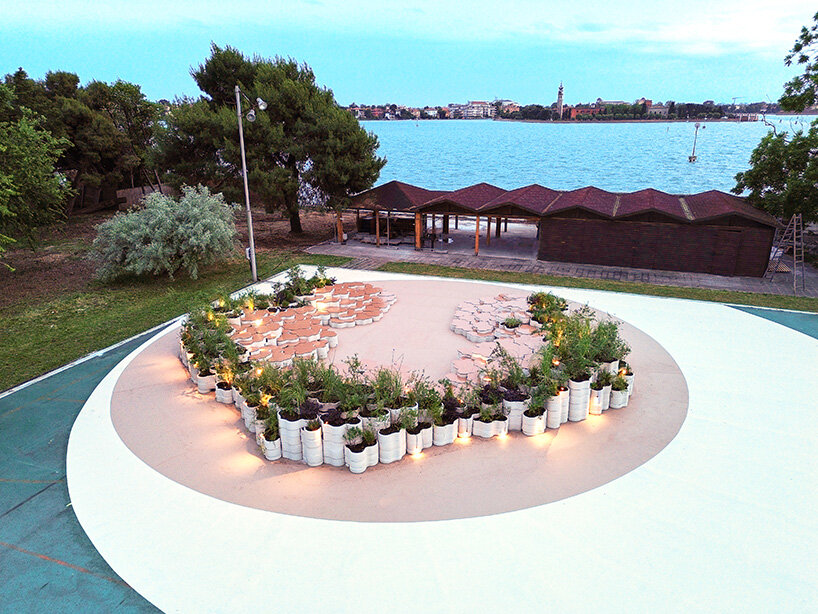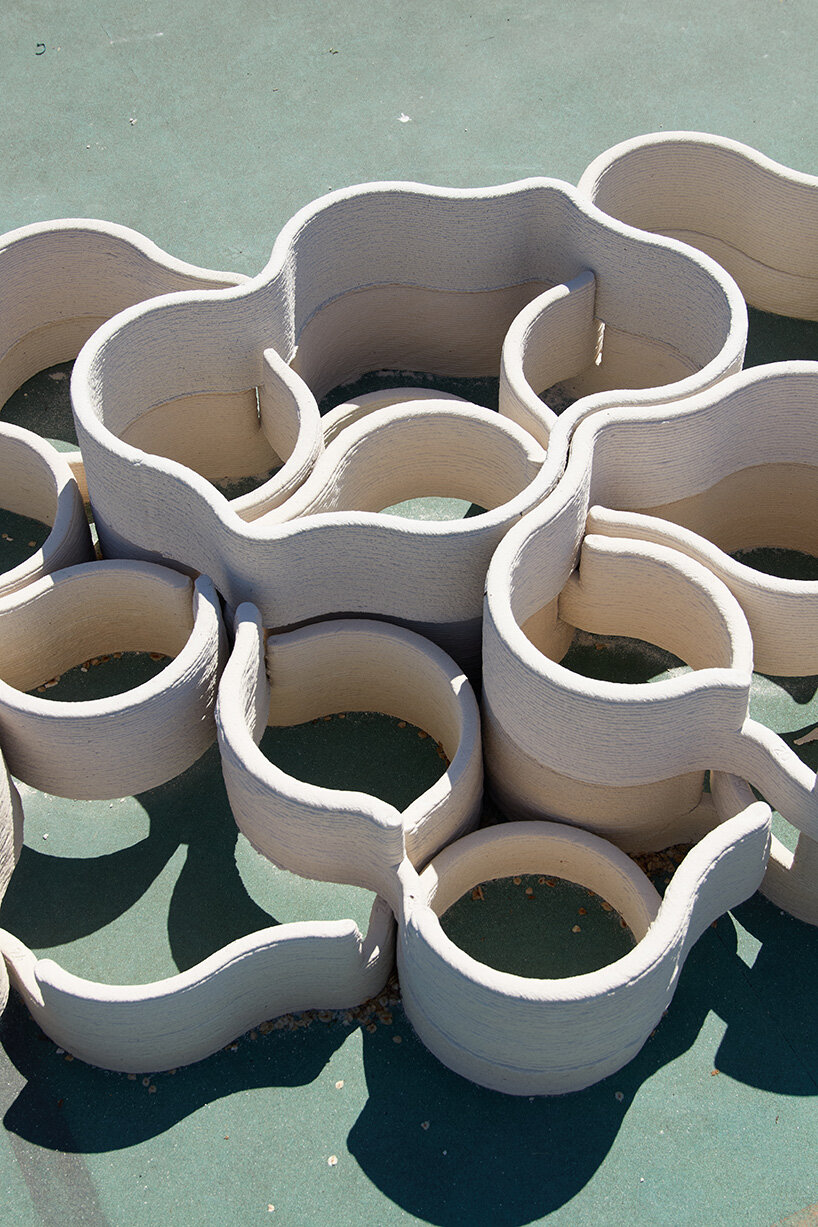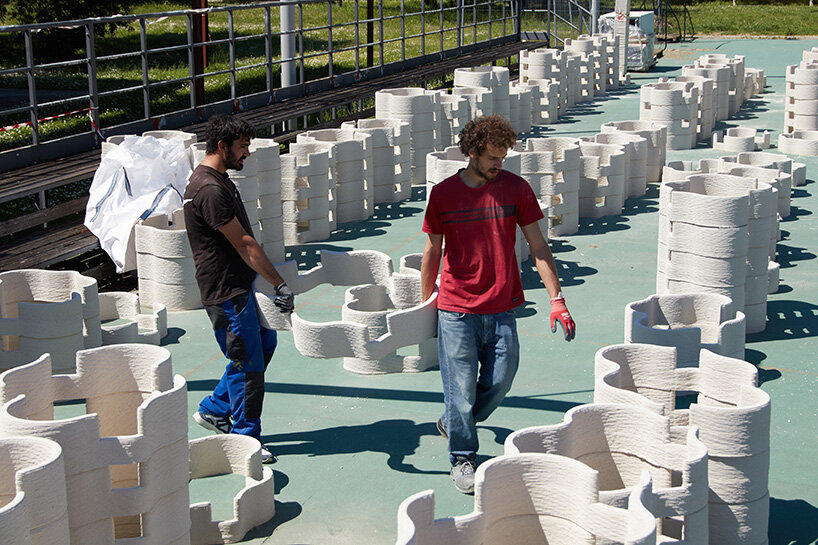Mario Cucinella’s amphitheater blooms in san servolo, venice
During the Green Design Days 2025, Mario Cucinella Architects (MCA) unveils A Flower in San Servolo, a 3D printed amphitheater in Venice’s San Servolo Island. Designed as a space for dialogue, performance, and community, the open-air structure blossoms like a flower, melding poetic form with a low-impact construction process. Created in collaboration with local innovators and built using sustainable, lime-based modules produced directly on the island, the amphitheater stands as a symbol of environmental and cultural synergy, timed to coincide with this year’s Venice Architecture Biennale. ‘Thanks to 3D printing and the use of sustainable materials, the structure integrates into the landscape with an organic form that, like a flower, emerges from the ground,’ shares the architect. ‘It is not just a stage space but a place for meeting and dialogue, where tradition and innovation merge in harmony with the environment.’
all images by Niccolò Baccega
750 dry-assembled blocks compose the structure
The project stems from a shared vision between architect Mario Cucinella and San Servolo srl, the public company managing the island. The goal is to create an inclusive, reversible structure available to students, residents, and visitors. Set against the cinematic backdrop of San Lazzaro degli Armeni, the amphitheater is conceived as an architectural gesture that grows from the earth and belongs to the lagoon.
Built from approximately 750 dry-assembled blocks across 62 unique types, each module is 3D printed from a certified sustainable material composed primarily of natural lime. An on-site printer ran for nearly 200 hours, reducing transport emissions and enabling precise, high-quality production. The structure was built using a dry assembly method, making it easy to take apart and reuse. Its modular design uses one interlocking piece, giving the amphitheater strength and a uniform look.

the open-air structure blossoms like a flower from the Venetian landscape

created in collaboration with local innovators and built using sustainable, lime-based modules

the amphitheater stands as a symbol of environmental and cultural synergy


